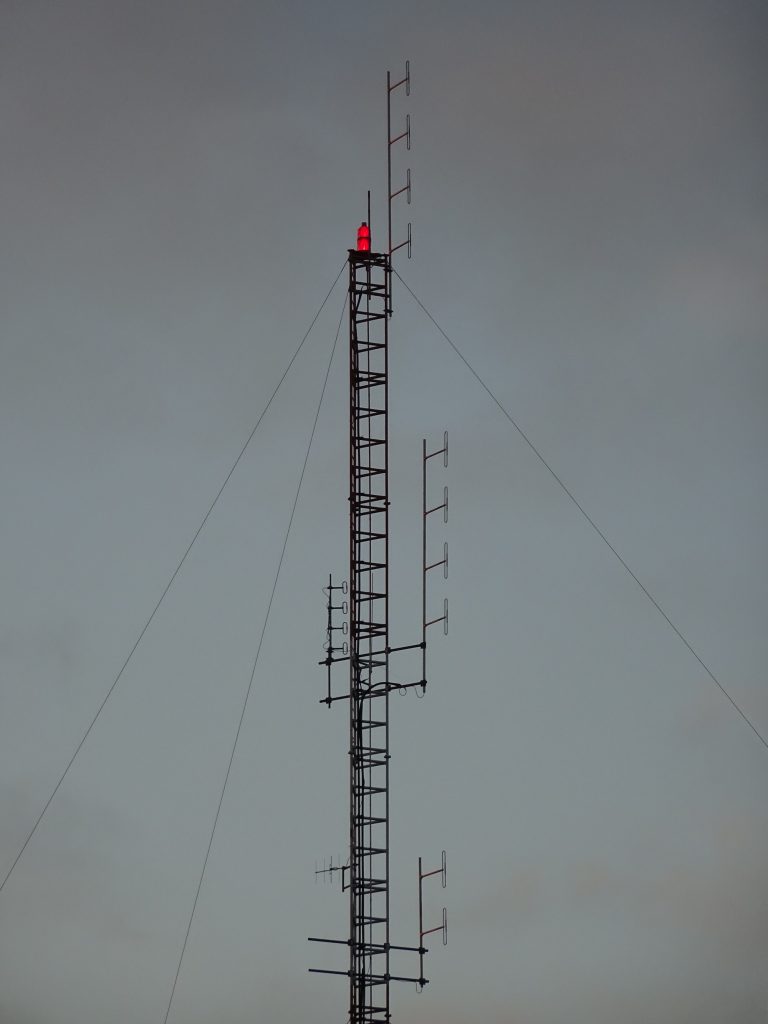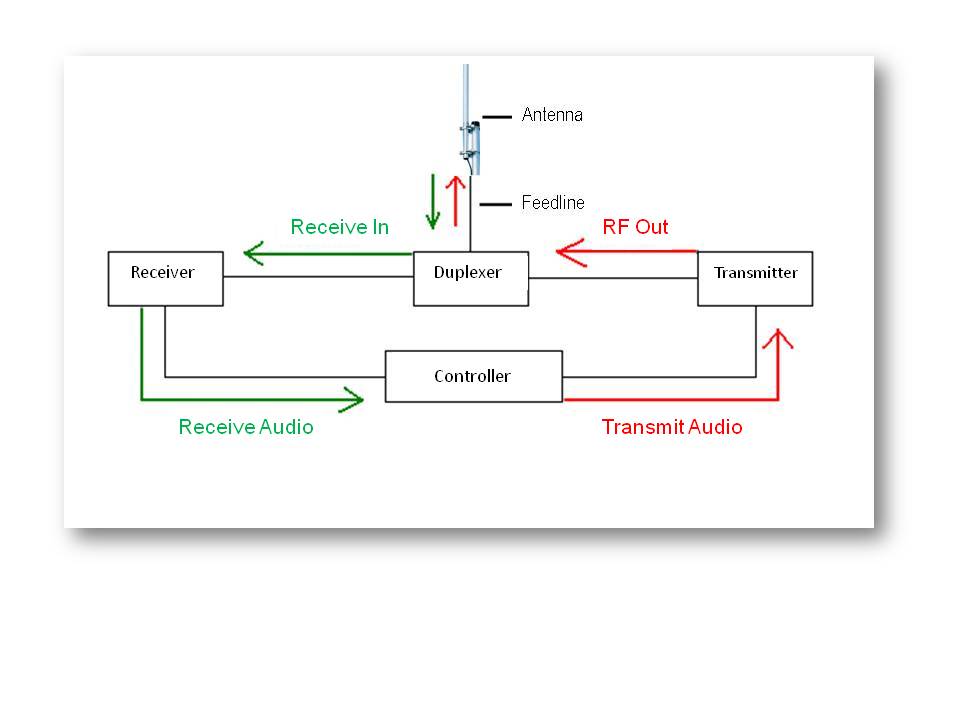
Want to get the best possible coverage in a marginal location, like inside a building or down in a valley? A repeater system can rebroadcast your transmitted and received signals to improve communications.
Repeaters and their antennas are generally located at high elevations—on towers, mountains, or atop tall buildings. To improve signals between radios, they use very efficient high gain antennas, low-loss feedlines and transmitter/receiver combinations that are rated for heavy or continuous duty. A repeater can increase your effective transmitting and receiving coverage, boosting the limited range of your transceiver alone.
How Does a Repeater Work?
Being a former track coach, I think of repeater operation as being much like running a relay race. The transmitting station hands off to the repeater, which receives the signal and passes it onto the receiving station. Since you push the transmit button to send and release to receive, only one side of the conversation is heard at any given time.
If you look at Figure 1, you’ll see the hardware involved in operating a repeater and the path the signals take. Here’s a brief explanation of the components used:

Antenna: Most repeaters use one antenna for both transmit and receive. It’s generally a high performance, durable, and efficient antenna with an omnidirectional pattern. They’re placed as high above ground level as possible.
Feedline: Repeaters use a rugged, low-loss cable called hardline. Actually, it looks more like flexible pipe with a center conductor than a cable. Hardline provides lower signal loss than conventional coax, which means more transmit power reaches the antenna and weaker signals can be received by the repeater.
Duplexer: The duplexer separates and isolates the incoming signal from the outgoing and vice versa. It prevents the receiver and transmitter from interfering with one another and helps to reject very strong nearby frequencies or other RF interference from getting into the repeater system. A duplexer typically has two bandpass filters connected in parallel. One filter provides a path between the transmitter and the antenna, and the other provides a path between the antenna and the receiver—there’s no direct path between the transmitter and receiver.
Receiver: Repeater receivers are generally very sensitive and selective, and capture signals that wouldn’t be clearly heard when transmitting directly from radio to radio. It is set to receive the input frequency from radio transceivers.
Controller: This is the brain of the repeater and is essentially a dedicated computer. It handles repeater station ID using either CW or voice, and activates the repeater at the appropriate times. It sometimes performs a variety other functions, such as giving programmed announcements or linking multiple repeaters.
Transmitter: Most repeaters have a transmitting section containing an exciter and a power amplifier. The exciter retransmits the received audio at the proper frequency and the power amplifier boosts its output.
Keeping Things Separate
To use a repeater, a station must use different transmit and receive frequencies. Without having an offset between transmit and receive signals, the repeater would only hear itself when it was transmitting on its receive frequency. For example, 2 meter Amateur Radio repeaters (144-148 MHz) use a +/- 600kHz offset between the receive and transmit frequencies. Repeaters in the 450-470 MHz band use a 5 MHz separation, while ones in the 806-869 MHz band use 45MHz separation.
Using an amateur radio repeater pair on 146.94/146.34 MHz as an example, here’s how the process works. Amateur radio operators would transmit their signal on 146.34MHz input frequency, which is received by the repeater. The repeater rebroadcasts the original signal on 146.94 to amateur radios or other receivers listening to the frequency.
Another feature that can help minimize interference and keep the repeater operating smoothly is the subaudible tone (e.g., PL, Motorola’s trademarked tone system). Subaudible (low level) tones can be sent during transmit. The purpose of the tone is to allow you to key up a repeater so you can transmit through it. If your radio is not sending the proper tone, the repeater will not open and relay the signal. Subaudible tones act as a gateway to screen out unwanted signals on receive, such as unauthorized users or signals from distant repeaters on the same frequency that may interfere as a result of band openings.
Hams on Repeaters
Amateur radio has been around for more than 100 years, but repeaters didn’t appear on the amateur bands until the late 1950s. Most of today’s Ham repeaters are used for local communications on the VHF/UHF bands. Repeaters are utilized in many areas to extend communication range and provide emergency local communications.
Typically you’ll find repeaters between 144-148 MHz, 222-225 MHz, 420-450 MHz, and 902-928 MHz. Some still exist in the HF/lower VHF band from 29.5-29.7 MHz and 51-54 MHz, but their numbers have declined.
Though FM is still the most popular repeater mode, digital repeaters with DMR, D-STAR (like the DX Engineering employee radio club, N8DXE, new D-STAR repeater), and Yaesu System Fusion capabilities are making inroads. Both digital and analog repeaters can also be connected to online networks such as Echolink, AllStar, Wires II, IRLP and others, allowing worldwide communication capabilities from a handheld radio.

